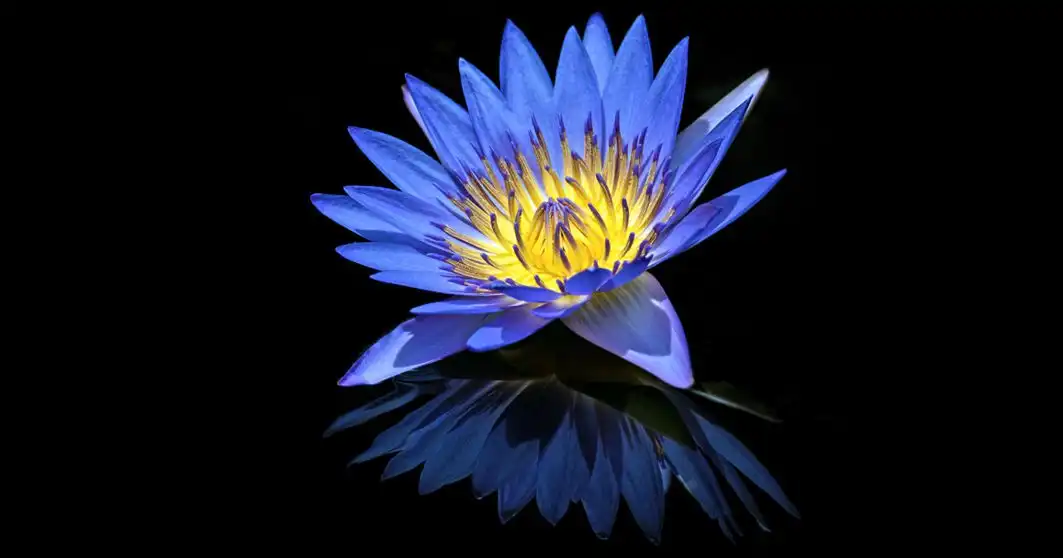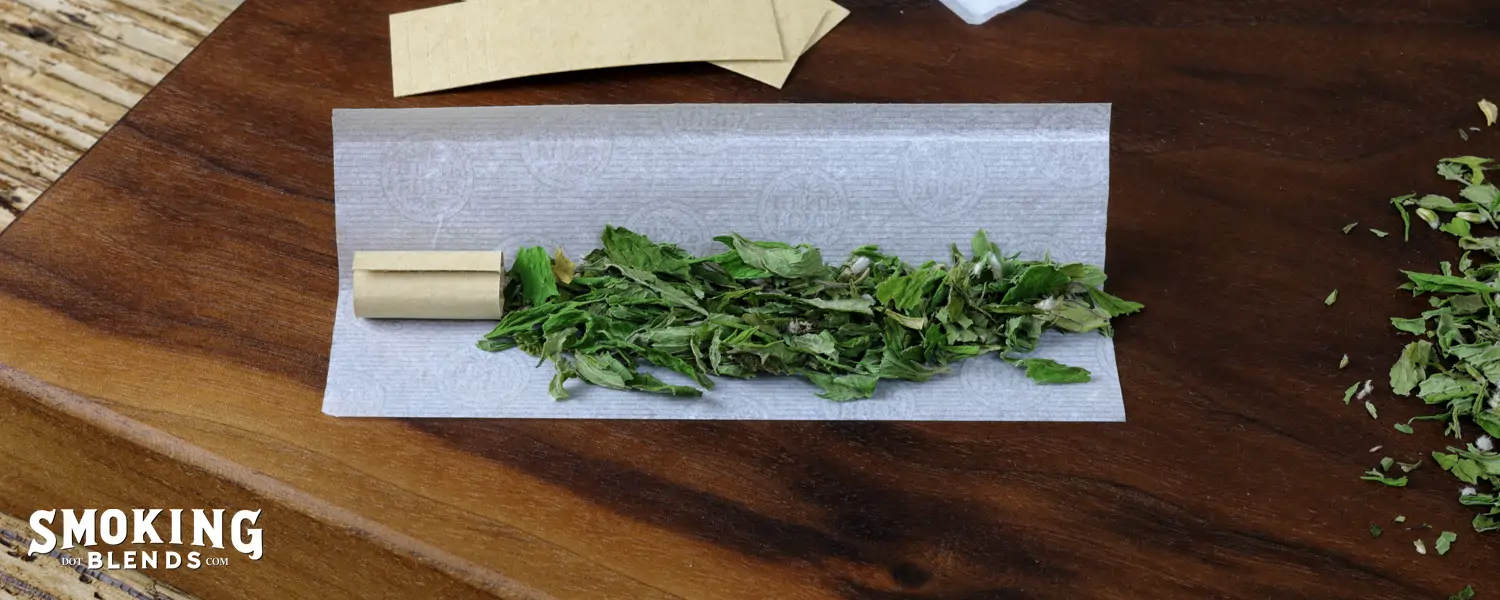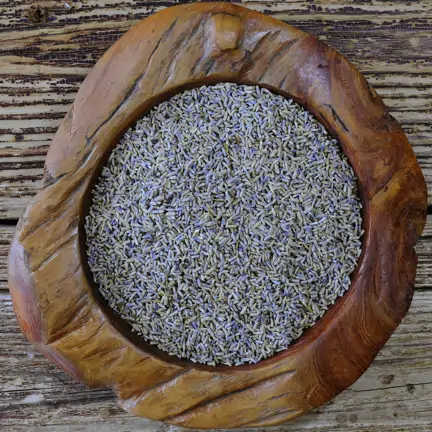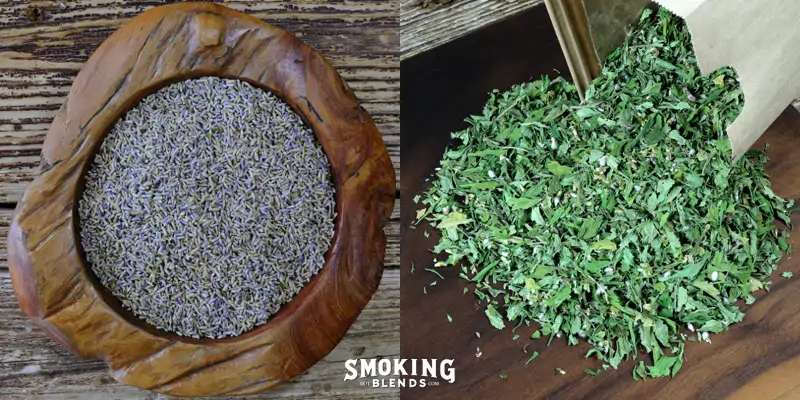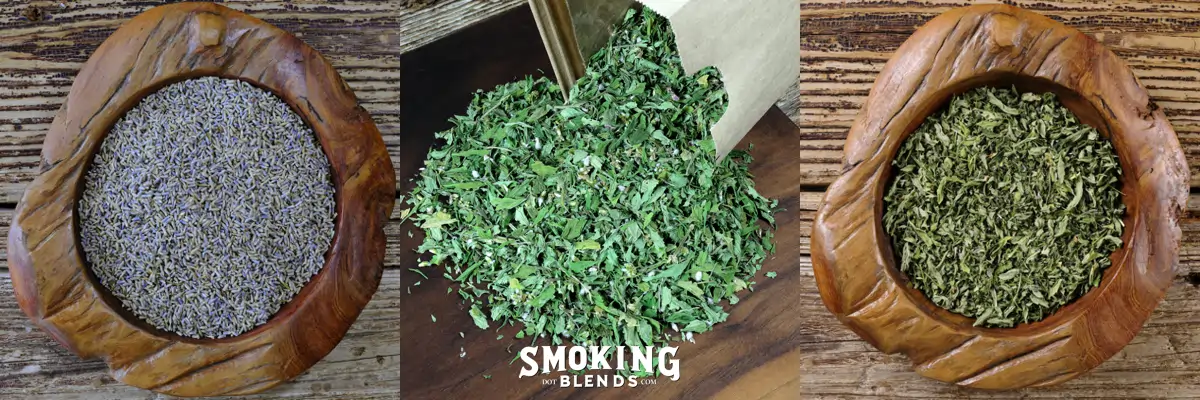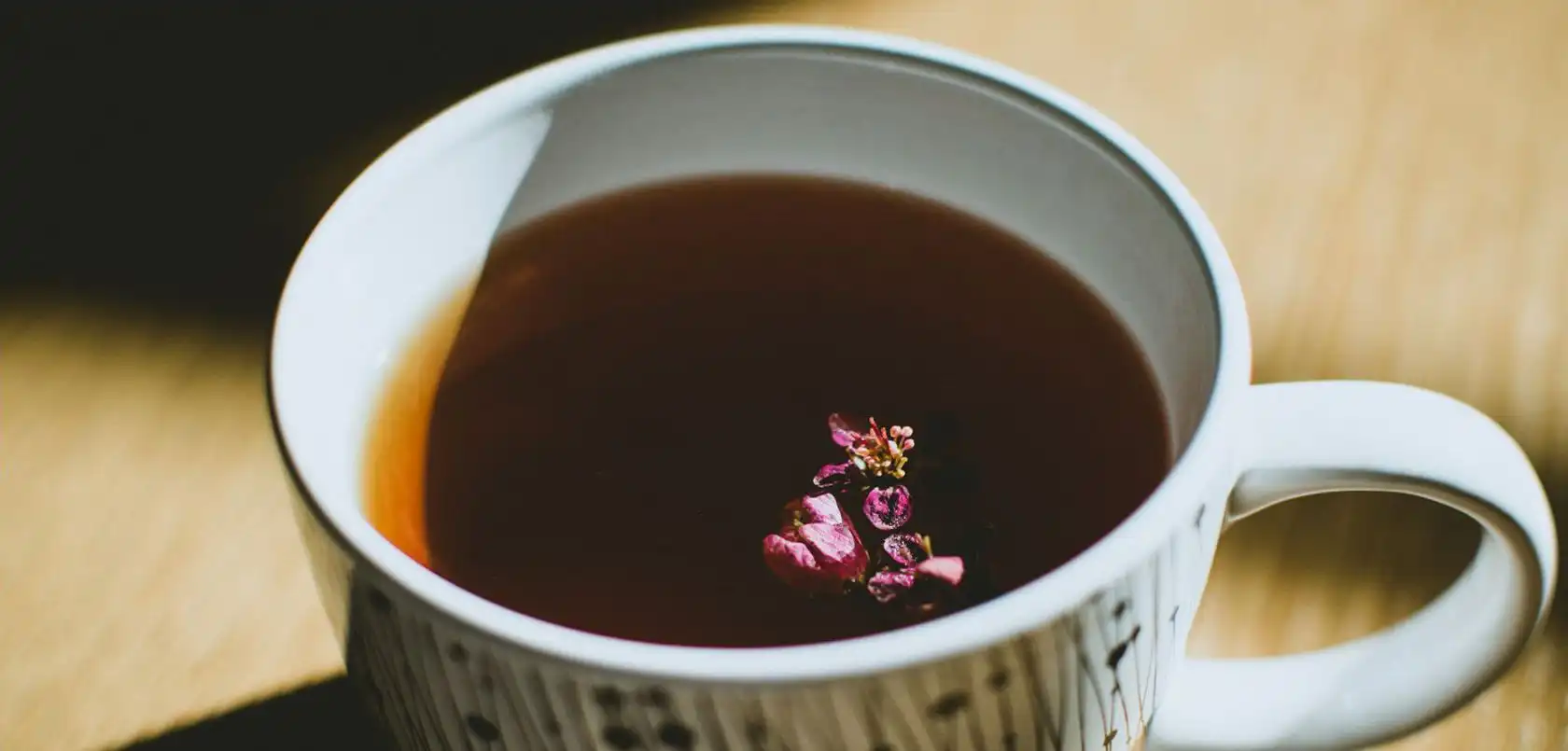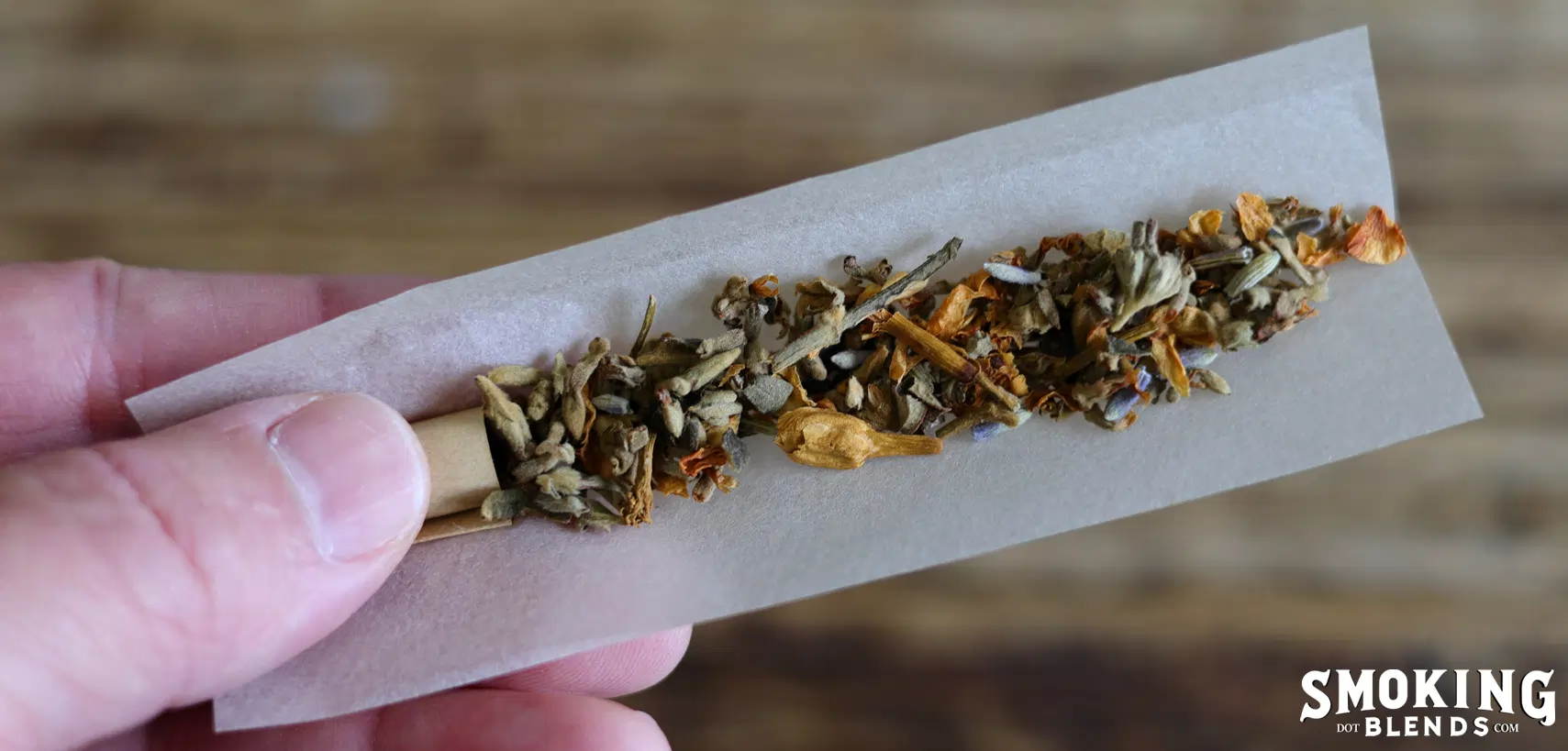
In doing research for this article, I discovered what I felt to be some interesting and widely disseminated misconceptions. The term “tobacco alternative” is most often used to describe another option to smoking or chewing tobacco. Yet, it is often assumed that it is describing a substitute for nicotine. Wouldn’t that be a “nicotine alternative”? For example, simply using the term “tobacco alternative” can be a violation of some search engines’ shopping category policies. When doing a search under the term “tobacco alternatives,” in the first 25 results, I found only one result that was a tobacco-free smoking or tea blend. The rest of the results led to information about tobacco, nicotine alternatives, or chewing tobacco alternatives. I found it odd because there are so many non-addictive natural herbal alternatives to smoking tobacco. Let’s talk a little bit about tobacco. Unburned tobacco leaf has been shown to contain 37 compounds classified as carcinogens. Tobacco smoke contains up to 80 compounds classified as carcinogens (1). Did you know that around 90 percent of people with oral cancer use tobacco, and 40% of all cancers diagnosed in the US can be linked to tobacco (2)? Smoking cigarettes can be linked to over 80% of lung cancer deaths. Not to mention, tobacco is much more addictive than almost any commonly used herb. Tobacco is widely used, but so are many other herbs. More people use other herbs for herbal tea, remedies and food dishes than use tobacco, and almost none have been cited as having the health risks associated with tobacco. There are some herbs that can be dangerous, but they are rarely used in herbal products or food and should never be. Smoking a hookah is said to be just as bad as smoking cigarettes because more smoke is inhaled. So wouldn’t smoking non-addictive herbs be less harmful than tobacco because someone would potentially smoke less? Putting herbs that can be smoked or chewed as an alternative to tobacco in the same category as tobacco has little basis in fact. Most are far less addictive and have nowhere near the potential negative side effects of tobacco. Some herbs can have side effects, exacerbate current medical conditions, or interfere with medications. Please fully research any herbs you plan on consuming.
Many herbs can be chewed and smoked, tobacco is not the only option. Here is a list of some popular herbs that have a history of being used as alternatives to tobacco.
Coltsfoot Leaf and Flowers
Botanical Name: Tussilago Farfara
Plant Family: Asteraceae
Also Called: British Tobacco, Tash Plant, Ass’s Foot, Bull’s Foot, Coughwort, Farfara, Foal’s Foot, Foalswort and Horse Foot.
This is a great place to start. Not only has coltsfoot (British Tobacco) been used as a smoking herb for hundreds of years, but it is also used to reduce congestion from cold and flu symptoms. Coltsfoot is a slightly harsh smoke but has a pleasant, clean aftertaste, slightly resembling menthol.
However, like tobacco, coltsfoot has been shown to contain chemicals that can cause health issues, like pyrrolizidine alkaloids that can negatively affect the liver and may cause birth defects. The flowers are used in Chinese Medicine with clear warnings regarding use during pregnancy or for people who are on medications, drink alcohol or have liver problems.
Because of these concerns, many herbal practitioners recommend other options like Garlic (Allium Sativum), Slippery Elm (Ulmus Rubra), Thyme (Thymus Vulgaris) or Elderberry (Sambucus Nigra) to assist with congestion and other cold and flu symptoms (1).
It should be noted that there is not enough clinical evidence at this time to determine the potential side effects of inhaling coltsfoot.
Mullein Leaf
Botanical Name: Verbascum Thapsus
Plant Family: Scrophulariaceae
Also Called: Lungwort, Hedge Taper, Candlewick, Feltwort, Hare’s-Beard, Torches, Blanketleaf, Jacob’s, Jupiter’s, or Peter’s Staff, velvetplant, Old Man’s Flannel and Miner’s Candle.
Mullein (Lungwort) has been used for hundreds of years and has been shown to be quite safe. Most negative side effects from mullein are allergic reactions to the plant. It is mainly used to relieve inflammation and congestion from cold and flu symptoms. Mullein leaves and flowers are also commonly smoked and used as tea.
When smoked, Mullein can be slightly harsh and does not have a great flavor, but it is not all that bad either. Many people do find it a relaxing smoke. The leaves of mullein are very fluffy and have fluffy little hairs on them that cause them to stick together, making it challenging to mix with other herbs.
Lobelia Leaf
Botanical name: Lobelia Inflata
Plant family: Campanulaceae
Also called: Indian Tobacco, Eyebright, Asthma Weed, Bladderpod, Puke Weed, Gagroot and Vomitroot.
Lobelia is a famous and widely used smoking herb also known as Indian tobacco that contains the active compound Lobeline. Lobeline and nicotine both agonistically activate nicotinic acetylcholine receptors. Meaning that in low doses they act as a stimulant, and in high doses they act as a depressant (1).
Both lobeline and tobacco will also induce vomiting if taken in larger doses.
Strangely, lobeline does not share the addictive qualities of nicotine. Lobelia is not a habit-forming herb like tobacco and is currently used in products that ease the symptoms of nicotine withdrawal.
It is believed that lobelia may lessen the effects of nicotine when smoked with tobacco, so mixing them may not be recommended.
Lobelia would best be used as an alternative to smoking tobacco after someone has stopped smoking it and is dealing with withdrawal symptoms.
When smoked, lobelia leaf is mildly harsh and of average flavor, and it is often used in tobacco-free smoking mixtures.
Pregnant and breastfeeding women, people with high blood pressure, heart disease, liver disease, kidney disease, tobacco sensitivity, paralysis, seizure disorder, shortness of breath, and those recovering from shock should not take lobelia (2).
Mugwort Leaf
Botanical name: Artemisia Vulgaris
Plant family: Asteraceae
Also called: Sailor’s Tobacco, Mother of Herbs, Felon Herb, Sweet Wormwood and St. John’s plant.
Mugwort is called sailor’s tobacco because it was smoked by sailors in lieu of tobacco on long voyages. As documented in The Flora Altaica, 1829–33.
Mugwort is both a nervine sedative and a nervine stimulant, meaning it is said to calm the nerves while increasing energy . I often have mugwort tea, and it seems to wake me up while also making me feel a bit more at ease.
When smoked, mugwort has a strong flavor but is not harsh. Because of its fluffy consistency, it is best suited for a pipe or dry herb vaporizer. This also makes it difficult to blend with other herbs. It is a slightly bitter tea.
Thank you for reading my post! This is a work in progress please check back for updates!
